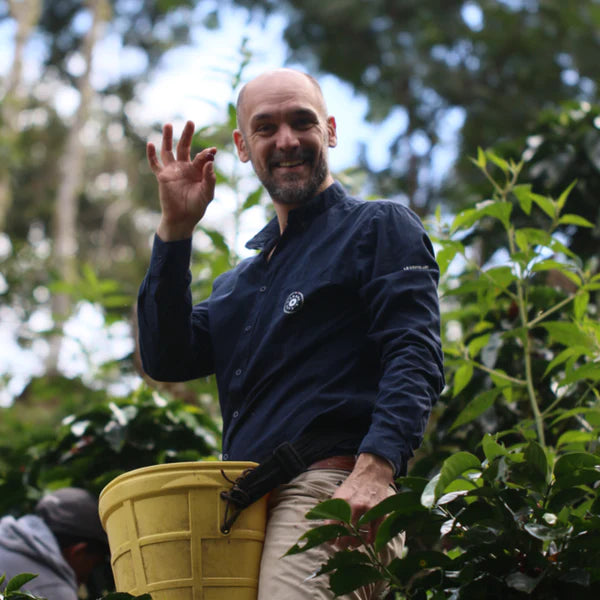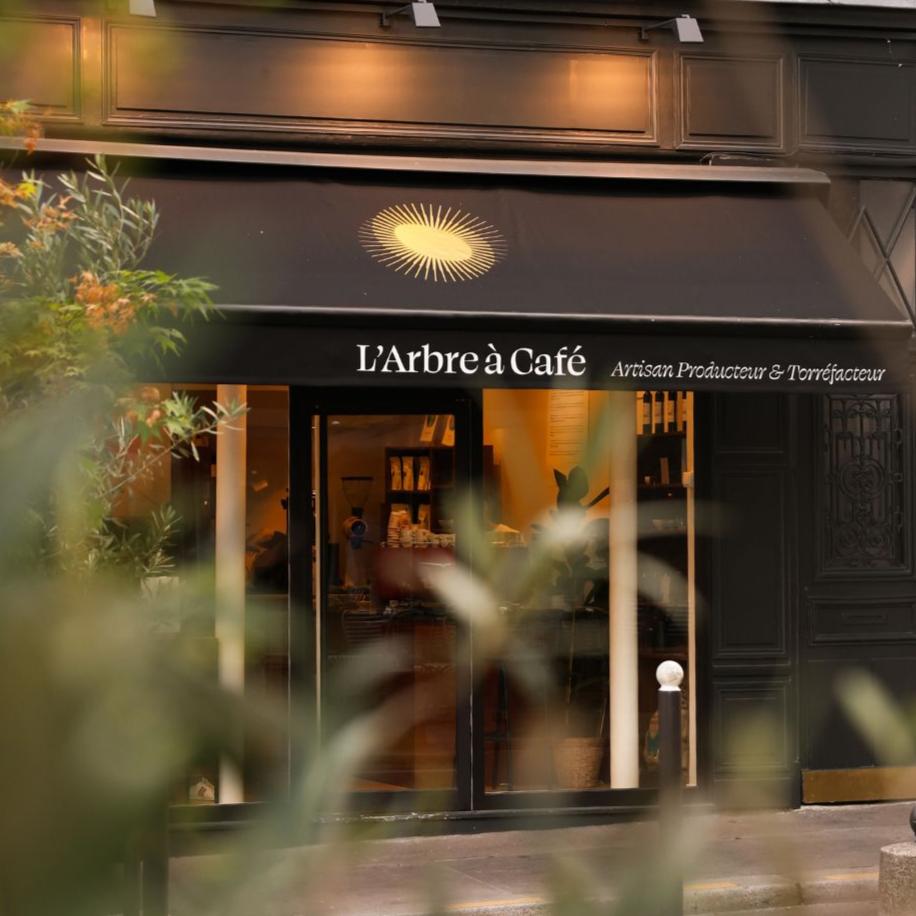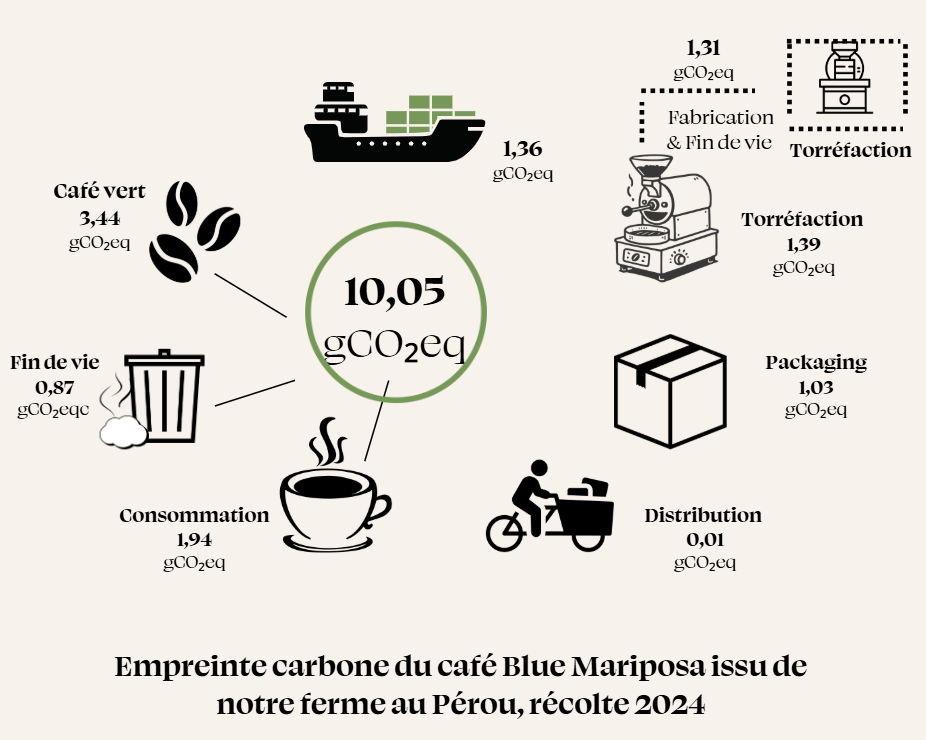Whether it is ice cream, éclair, opera, confectionery or chocolate, the "taste" of coffee definitely put me off and acted as a real repellent. And yet, among the heritage masterpieces of French pastry making, the Moka and the Opera are enthroned, and on all the pastry shop shelves: the eclairs and the coffee religieuses. It's because coffee had an interest in being pastry!
However, this taste, flat, dull, without life or complexity, stopped and monolithic, is only an unpleasant bitterness and a smell of burnt cereals.
When I started in the business, after having succumbed to the charms of specialty coffee, working with pastry chefs was an obvious choice. And it came at the right time, because under the initiative of Pierre Hermé, pastry-making had well begun its contagious revolution towards haute couture pastry-making, combining technical requirements, unprecedented creativity and product quality. But at the end of the 2000s, no one had yet really looked at the coffee itself. The norm was, and still is in the vast majority of establishments, to use industrial ersatz coffee: most often concentrated or freeze-dried coffee. The professionals closest to the product used to combine these two chemical crutches with low quality, over-burned industrial coffees, and put them in the oven to extract even more bitterness and carbon taste. As in the kitchen, they were looking for power and empyreumatic notes. From then on, the coffee's aromatic palette was reduced to bitterness, strength and burnt, while its color was reduced to a uniform greenish brown, but perfectly brilliant and covering.
What will seem obvious in a few years, was not obvious until recently: respecting the product, understanding all that it can bring are the bases of any craft. The coffee can be used green (raw), half-cooked or roasted, it must never be cooked again or put in the oven or immersed in a liquid, often cream or milk, hot, otherwise it would express less noble aromas.The varieties, the roastings, the origins can be chosen according to the goal to reach, the tastes to bring. The grind, its freshness and size, and the infusion times will modulate the aromatic and chromatic intensity. Thus, the coffee pastries will be as diverse and singular as the coffees themselves and each craftsman will be able to express his identity in the coffee pastries!
This is what Jacques Génin, Pierre Hermé, Sébastien Gaudard, Alex Croquet, Claire Damon, Katty Caroline, Sophie Sauvage, Jonathan Blot, Cédric Grolet, François Perret or Eric Verbauwhede and a few others have already done, to mention only the stall pastry chefs, or Pierre Geronomi to talk about ice cream.
COLLECTION FETISH : gourmet dialogue between 2 enthusiasts | Pierre Hermé x Hippolyte Courty

Pierre Hermé's taste for detail and his insatiable curiosity lead him to seek out the best in everything. Learning and discovery are in his nature. Sometimes it takes him months, sometimes years, to unravel the mystery of certain products. Coffee belongs to this category. Pierre Hermé has taken an interest in this flavor that we think we know everything about. The result? An incredible Fetish Infiniment Caféné from the gourmet dialogue between the pastry chef and Hippolyte Courty, founder of "L'Arbre à Café".
Its starting point? The Tarte Infiniment Café, created by Pierre Hermé in 1999. At their first meeting, Pierre Hermé asked Hippolyte Courty to taste this tart. In all simplicity. Hippolyte tasted the recipe, but he didn't find the coffee taste that made him travel the world and the plantations. So he asked Pierre Hermé to guide him through his world of coffee.
Exceptional quality vintages, carefully selected. A world of nuances, plants, fruits, size, maturity, roasting, preparation. Together, they tasted coffees from all origins, to select just two. For months, Pierre Hermé and the pastry chefs of the creation workshop explore the techniques. As usual, Pierre Hermé records every nuance, every flavor... Length in the mouth, textures, a whole palette of new sensations, new tastes, which enrich his gourmet repertoire. During his journey of initiation, Pierre Hermé first discovered the diversity of tastes offered by the different varieties of coffee. He retained two of them. Two very original facets. His aim: to discover previously unexplored dimensions of coffee taste, to open up new horizons. The alchemy of recipes can begin. Each step counts. The grinding. The temperature of the water. The time and method of infusion, cold or hot, a few minutes or a few hours... First chosen: the Red Iapar from Brazil. A coffee of the land, both powerful and sweet, an aromatic nuance of chocolate, cinnamon and spices embellished by a dynamic aroma of eucalyptus. Then, Pierre Hermé is passionate about the Bourbon Pointu du Piton des Neiges from Reunion Island. An exceptional coffee, rare, whose singular delicacy is delivered in the length, to offer a pleasure of meditation without artifice. In the course of these creations, the power of the Iapar and the subtlety of the Bourbon Pointu respond to each other and it is one of the attractions of this Fetish Infiniment Café to reveal all the dimensions that coffee can offer. Along the way, Hippolyte Courty also introduces Pierre Hermé to cascara, a coffee pulp with digestive properties, with its sweet notes, red fruit and spice aromas, and also to green coffee with its vegetal notes reminiscent of peas, green beans or cucumbers. Guided by Hippolyte Courty, Pierre Hermé has designed the curves of this generous collection, a daring itinerary of sensations and pleasures... in coffee color.an incredible profusion of emotional moments from a meeting of two taste enthusiasts.

Find the signature caffeinated creations in issue 22 of Fou de Pâtisserie.




















